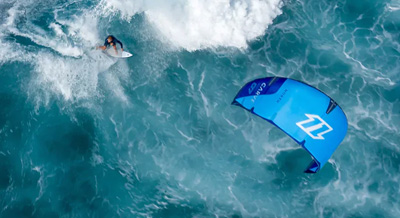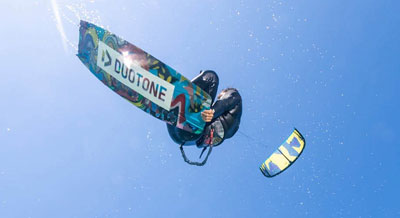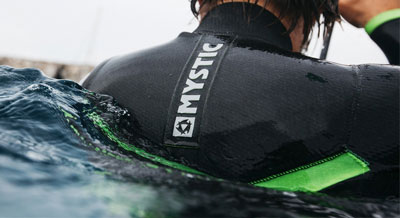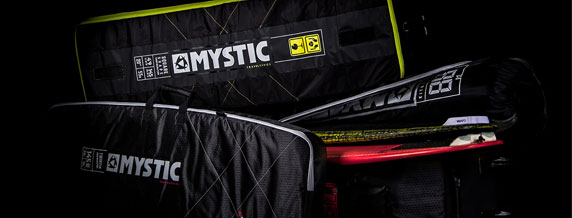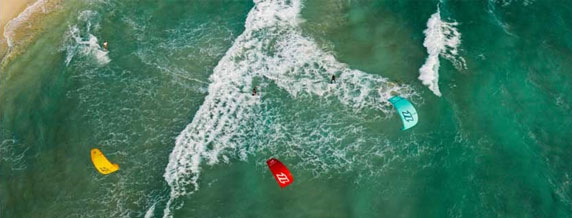Kitesurf Beginners Guide
All you need to know about kites, kiteboards, wetsuits and harnesses and how to select your first setup! All the knowledge you need is provided below as well as product examples and complete sets. Need help finding the right kitesurf gear? Feel free to contact us!
What subject do you want to know more about?

Buying a Harness
We help you as a beginner in making the right harness choice
Harnesses for beginners
Your harness is one of the most important (and probably most undervalued) pieces of your gear. It is the crucial connection between you and your kite. You will hook into a lot of power and use your harness to lean against that… therefore, nothing less than a great fit and the right choice of materials will do! No worries, after reading the following page, you will know everything you need to pick a comfortable, functional and robust harness:
- What types of harnesses are used for kitesurfing?
- Which kitesurfing harness is best for me – seat/ waist or hybrid harness?
- Which waist harness is ideal for me – soft, medium or hard-shell harness?
- What is my harness size?
- Should I get a spreader bar with a hook or a slider?
- Where should I connect my leash?
- How do I take care of my harness?
- Can I use a windsurfing harness for kitesurfing?
- Can I connect a board leash to my harness?
What types of harnesses are used for kitesurfing?

Seat Harnesses
Seat Harnesses sit on the hips, equipped with leg straps, used mostly by beginners and some foilers.

Waist Harnesses
Waist Harnesses sit between hips and ribs, used by the majority of intermediate and advanced kiters.

Hybrid Harnesses
Hybrid Harnesses sit on both waist and hips, waist harness with detachable seat part and leg streps.
Which kitesurfing harness is best for me – seat/ waist or hybrid harness?
Kitesurf schools mostly use a seat harness for teaching, as they are more convenient in the beginning. Why? When learning how to control the kite and ride your board, the pull of the will mostly be upwards and the seat harnesses cannot slide up, due to the attached leg straps. Also the hook of a Seat harness is often much lower then a waist harness, which will give less pressure to your core.
For beginners, that can ride upwind, intermediates and advanced kiters, we generally recommend waist harnesses. Why? They offer more freedom of movement. However, in some cases like for foilers, riders with shorter arms or people with back issues, seat harnesses can be a better option.
Which waist harness is ideal for me – soft, medium or hard-shell harness?
Soft shell harnesses are flexible and do adjust to your body and movements. This offers a lot of comfort, but also the least amount of support for your back. So, if you want to cruise in comfort, go with a soft-shell harness.

Hard shell harnesses are stiff and keep their shape. This gives you a very direct feedback from your kite and a lot of support. The ideal hard-shell harness spreads the pressure from the kite evenly across the whole back plate and does not pinch you on the side. If you are ambitious or want to ride in strong winds, go with a hard-shell harness.

Harnesses that are in between are called medium or flex-shells. These are a mix of both. Some hard shells are more flexible than others and others have a very stiff back plate and flexible side panels. This offers a great mix of comfort and performance and is suitable for most riders.

What is the right size for me?
Most manufacturers offer harnesses from XS to XXL. We have uploaded the size chart for most harness on the product pages in our online shop. Simply measure your waist diameter and check size chart, which size suits you best.
Should I get a spreader bar with a hook or a slider?
Some harnesses are offered including a spreader bar. But for more advanced harnesses you can choose which spreader you want to ride. You can choose for a hooked spreader bar, a slider spreader bar or now a days you have also some spreader bars which can offer both disciplines in one spreader bar.
Hook: This is a fixed connection, where you hook in your chicken loop and secure it with your chicken stick. This results in a more direct feedback from your kite. Twintip riders most often use spreader bars with hooks. As most beginners start off on a twintip, you should get a spreader bar with hook first.

Slider: For this connection, you open your chicken loop, pull it under the slider and stick your chicken loop back into your quick release. This connection can therefore slide from left to right. This results in more freedom of movement, when twisting your hips. Wave-riders and foilers often prefer spreader bars with sliders.

Combination of hook and slider: the Stealth slider spreader bar of Mystic has a loop, which you can use to pull the slider ring through and this will give you the same experience as a hooked spreader bar. When you mostly practice wave riding, but like to use your Twintip in some cases this option can be very nice.

Where should I connect my leash?
As beginner always start with a short leash. Long leash is only convenient when you freestyle and unhook.
You should always make use of the option to connect your leash in the front.
How do I take care of my harness?
Rinse it regularly with cold, fresh water and do not dry it in direct sun light
Can I use a windsurfing harness for kitesurfing?
No, windsurfing harnesses should not be used for kitesurfing! Windsurfing hooks have a different shape than kitesurfing hooks and are not compatible with your chicken loop and stick
Can I connect a board leash to my harness?
No, never use a board leash for kitesurfing! This is a ground rule, as the chances are very high, that you will injure yourself
Need help finding the right wetsuit? Feel free to contact us at any time!
Added to basket
| Subtotal | $ 0,00 |
| Shipping costs US | $ 69,95 |
| Total Total(excl VAT) | $ 69,95 |
You have no product(s) in you basket.
Weet je niet waar je moet beginner?
Contact our customer service for advice

